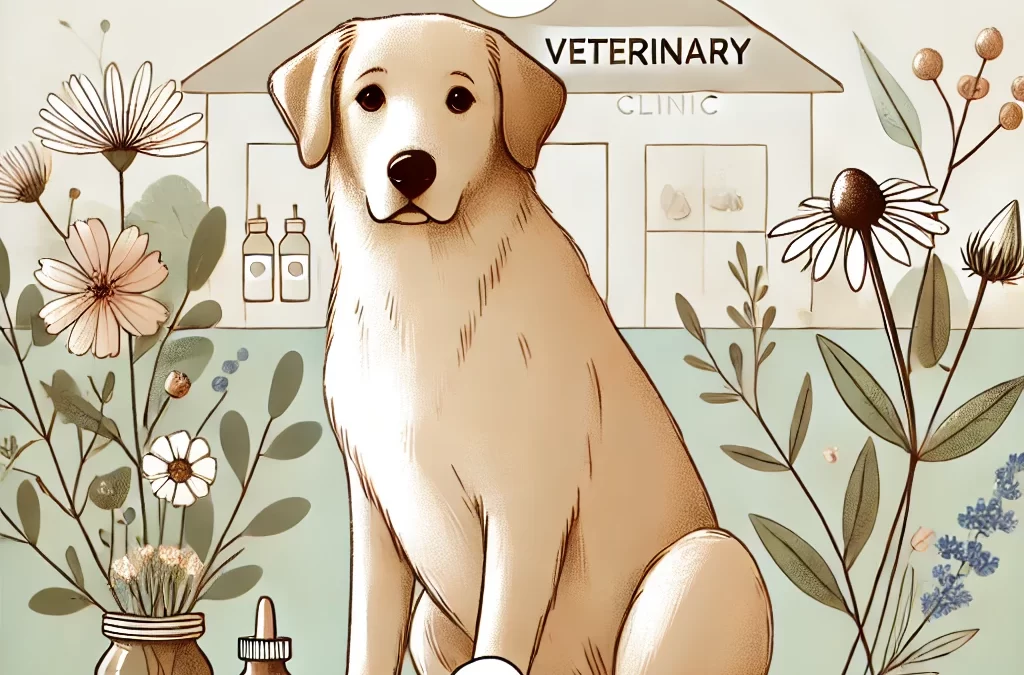
에 의해 TCMVET | 2024년 12월 4일 | 개 암 및 종양
Heart base tumors, though less commonly discussed than other canine cancers, pose significant health challenges for affected dogs. These tumors originate near the base of the heart and often remain undetected until they grow large enough to interfere with heart function. Understanding this silent yet serious condition can help dog owners take proactive steps toward diagnosis and treatment.
What Are Heart Base Tumors?
Heart base tumors are growths that form in or around the base of the heart, typically near vital structures such as the aorta or pulmonary artery. The two most common types are:
- Chemodectomas (Paragangliomas): Slow-growing tumors arising from chemoreceptor cells that regulate blood oxygen levels.
- Ectopic Thyroid Tumors: Rare tumors originating from thyroid tissue located near the heart.
Both types can compress the heart or adjacent structures, leading to significant cardiovascular complications.
Breeds Predisposed to Heart Base Tumors
While any dog can develop these tumors, certain breeds are more susceptible due to genetic predisposition. These include:
These breeds often display symptoms later in life, with the condition frequently diagnosed in middle-aged to senior dogs.
Signs and Symptoms: The Subtle Warnings
Heart base tumors are often asymptomatic in their early stages, making early detection challenging. However, as they grow, the following symptoms may appear:
- Exercise Intolerance: Difficulty performing activities the dog once enjoyed.
- Coughing: Caused by fluid accumulation or pressure on the trachea.
- Fainting (Syncope): Resulting from disrupted blood flow.
- Swollen Abdomen: Due to fluid buildup (ascites) from heart failure.
- 호흡 곤란: Indicating compression of the lungs or airways.
These symptoms often mimic other cardiac or respiratory conditions, complicating diagnosis.
Innovative Diagnostic Approaches
Traditional diagnostic methods, such as X-rays and echocardiograms, remain valuable, but new technologies are advancing the field:
- CT and MRI Scans: Provide detailed imaging of the tumor and surrounding structures.
- Biopsy with Fine Needle Aspiration: Helps determine the tumor type and inform treatment plans.
- 유전자 테스트: Emerging tools may identify predispositions in certain breeds.
Treatment Options: A Tailored Approach
Treatment for heart base tumors depends on factors such as tumor type, size, and the dog’s overall health. Options include:
- 외과적 제거: Effective for small, localized tumors but carries risks due to the proximity to vital structures.
- 방사선 치료: Often used for inoperable tumors to slow growth and alleviate symptoms.
- 완화 치료: Includes medications like diuretics to manage symptoms such as fluid retention.
Natural Therapies: Complementary Solutions
For owners seeking alternative approaches, natural therapies may complement conventional treatments:
- Herbal Supplements: Formulas like astragalus and turmeric may support immune health and reduce inflammation.
- 침술: Can improve circulation and alleviate pain in affected dogs.
- 영양 지원: Diets rich in antioxidants and omega-3 fatty acids may bolster overall health.
While natural therapies can be beneficial, they should always be discussed with a veterinarian to ensure they do not interfere with standard treatments.
예후: 무엇을 기대해야 할까
The prognosis for dogs with heart base tumors varies widely. Chemodectomas are generally slow-growing, and dogs may live months or even years with proper management. However, aggressive or inoperable tumors may lead to a shorter lifespan. Regular monitoring and timely intervention are key to improving outcomes.
A Call to Action: Raising Awareness
Heart base tumors remain an under-recognized threat in veterinary medicine. Increased awareness can lead to earlier diagnosis and better outcomes for affected dogs. Owners of at-risk breeds should prioritize regular check-ups and advocate for advanced diagnostics if cardiac issues are suspected.
결론
Heart base tumors are a complex and challenging condition, but knowledge is power. By understanding the risks, symptoms, and available treatments, dog owners can provide the best possible care for their furry companions. Together, we can shed light on this silent threat and offer hope to dogs and their families.

에 의해 TCMVET | 2024년 12월 4일 | 개 암 및 종양
가족에게 털복숭이 친구를 추가하는 것을 고려할 때 건강은 의사 결정 과정에서 중요한 요소가 되어야 합니다. 모든 개는 특정 건강 상태에 취약하지만 일부 품종은 유전적으로 암을 발병할 가능성이 있습니다. 이러한 위험을 이해하면 정보에 입각한 선택을 하고 반려동물의 건강을 적극적으로 관리할 수 있습니다.
일부 품종이 암에 더 걸리기 쉬운 이유는 무엇일까?
개에서 암은 인간과 마찬가지로 유전, 환경 요인 및 나이에 영향을 받습니다. 특정 특성을 위해 선택적으로 번식된 품종은 종종 암에 대한 소인을 포함한 유전적 취약성을 물려받습니다. 많은 품종의 경우, 이 불행한 유산은 바람직한 특성을 유지하기 위한 수세기 동안의 근친 교배의 결과입니다.
암 위험이 높은 품종
1. 골든 리트리버
골든 리트리버는 친근한 성격과 지능으로 사랑받지만 특히 암 발병 위험이 높습니다. 림프종 그리고 혈관육종. 연구에 따르면 골든 리트리버의 약 60%가 평생 동안 암에 걸릴 것으로 나타났습니다. 이 놀라운 통계는 골든 리트리버 평생 연구와 같은 연구 이니셔티브를 주도하여 그들의 취약성 이면에 있는 이유를 밝히는 것을 목표로 했습니다.
2. 베르네스 마운틴 독
온화한 기질과 눈길을 끄는 삼색 털로 유명한 베르네스 산악견은 평균보다 높은 위험에 직면합니다. 조직구육종, 희귀하지만 공격적인 형태의 암입니다. 비교적 짧은 수명(6~8년)이 이 질병과 종종 연관됩니다.
3. 복서
장난기 어린 에너지와 충성심을 지닌 권투 선수는 다양한 암에 걸리기 쉽습니다. 비만 세포 종양 그리고 림프종. 그들의 소인은 특정 유전자 돌연변이와 관련이 있을 수 있으므로 정기적인 수의사 검진이 필수적입니다.
4. 로트와일러
로트바일러는 강하고 튼튼한 개라는 평판에도 불구하고 다음과 같은 질병에 취약합니다. 골육종, 뼈암의 한 유형입니다. 이 위험은 특히 큰 로트바일러에서 높으며, 체중과 관절 건강을 모니터링하는 것이 중요하다는 것을 강조합니다.
5. 스코티시 테리어
스코티시 테리어는 애정을 담아 스코티시라고 불리며 비례적으로 영향을 받습니다. 전이세포암(TCC), 방광암의 한 종류입니다. 이 품종 특유의 위험은 작지만 튼튼한 이 개들의 요로 건강을 관찰하는 것의 중요성을 강조합니다.
고정관념 깨기: 소형견도 예외는 아니다
암은 종종 대형 품종과 관련이 있지만 소형 품종은 면역이 없습니다. 예를 들어, 보스턴 테리어 그리고 닥스훈트 비만세포종과 흑색종에 걸리기 쉽습니다. 개의 크기가 항상 암 위험과 상관관계가 있는 것은 아니므로 모든 애완동물 주인에게 경계가 중요합니다.
개에서 암 위험을 줄이는 방법
개의 유전적 구성을 바꿀 수는 없지만 위험을 최소화하기 위해 사전 조치를 취할 수 있습니다.
- 영양물 섭취: 항산화제가 풍부한 음식으로 균형 잡힌 식단을 개에게 먹이세요. 오메가-3 지방산과 같은 보충제도 세포 건강을 지원할 수 있습니다.
- 규칙적인 운동: 개가 활동적으로 지내도록 하면 건강한 체중을 유지하고 면역 체계의 부담을 줄일 수 있습니다.
- 독소를 피하세요: 살충제, 담배연기 및 기타 발암 물질에 대한 노출을 최소화합니다.
- 정기 검진: 이상을 조기에 발견하기 위해 매년 수의사 진찰을 받으십시오.
- 불임 수술: 특정 품종의 경우, 생식암 위험을 낮출 수 있습니다.
혁신적 연구: 희망의 광선
수의학의 최근 발전은 암에 걸리기 쉬운 품종에 희망을 제공하고 있습니다. 면역 요법, 표적 요법 및 유전자 검사가 더 쉽게 접근 가능해져 조기 발견 및 맞춤형 치료가 가능해졌습니다. 예를 들어, Canine Cancer Genome Project는 인기 품종의 유전적 소인을 매핑하여 품종별 예방 조치의 길을 열었습니다.
품종 선택: 진심 어린 결정
집에 어떤 품종을 데려올지 결정하는 데는 실용적인 고려 사항과 감정적 연결의 균형을 맞추는 것이 포함됩니다. 암 위험이 높은 품종에 끌린다면 잠재적인 의료비와 만성 질환을 관리하는 데 따른 감정적 헌신에 대비해야 합니다. 많은 개 애호가들은 이 품종들이 가져다주는 기쁨이 종종 건강 위험의 어려움보다 더 크다는 데 동의할 것입니다.
결론
어떤 품종은 암에 더 취약하지만, 인식과 선제적 관리가 그들의 삶의 질을 크게 향상시킬 수 있습니다. 그들의 고유한 취약성을 이해함으로써, 당신은 그들이 받을 만한 사랑과 보살핌을 제공할 수 있으며, 가슴 아픈 도전이 될 수 있는 것을 연민과 회복력의 여정으로 바꿀 수 있습니다.

에 의해 TCMVET | 12월 3, 2024 | 개 암 및 종양
Hemangiopericytoma is a rare soft tissue tumor in dogs, arising from pericytes, the cells surrounding blood vessels. While these tumors are generally slow-growing and localized, their tendency to recur after surgical removal makes them a unique challenge in veterinary oncology. This article delves into the nature of hemangiopericytomas, their diagnosis, and groundbreaking ways to manage them effectively.
What is Hemangiopericytoma in Dogs?
Hemangiopericytomas are typically found in the skin or subcutaneous tissues of middle-aged to older dogs. These tumors may appear as:
- Firm, movable lumps under the skin
- Masses varying in size, sometimes ulcerated if on the surface
- Slow-progressing but invasive growths
Commonly located on limbs, these tumors rarely metastasize but can significantly impact a dog’s mobility and comfort.
Uncommon Signs to Watch For
While hemangiopericytomas might initially seem harmless, certain symptoms should raise concern:
- Persistent licking or biting of a lump
- Swelling that doesn’t resolve
- Localized lameness or discomfort
These subtle signs often precede more obvious indications of a growing tumor.
Innovative Approaches to Diagnosis
Traditional diagnostic methods involve fine-needle aspiration or biopsy, followed by imaging like X-rays or ultrasounds. However, advancements in veterinary diagnostics now allow for:
- CT 스캔: Providing detailed images of the tumor’s extent.
- 3D Tumor Modeling: Used to plan precise surgical interventions.
- Liquid Biopsies: A cutting-edge method to detect tumor-specific markers in the bloodstream, offering non-invasive monitoring.
Rethinking Treatment Options
While surgery remains the gold standard for hemangiopericytoma treatment, innovative methods are emerging to enhance outcomes:
- Advanced Surgical Techniques: Laser surgery and electrosurgery reduce the risk of recurrence by achieving cleaner margins.
- 면역 요법: Stimulating the immune system to target residual cancer cells post-surgery.
- 냉동요법: Freezing tumor cells for localized control when surgery is not viable.
- 광역동치료: Using light-activated drugs to destroy cancer cells.
These novel approaches provide alternatives for cases where traditional surgery might be challenging or insufficient.
Natural and Supportive Therapies
Holistic care is gaining traction as a complement to conventional treatments. These include:
- 허브 보충제: Ingredients like astragalus and medicinal mushrooms support immunity and potentially inhibit tumor growth.
- 침술: Helps alleviate pain and improve overall wellbeing.
- CBD 오일: Renowned for its anti-inflammatory and analgesic properties, it can help dogs cope with discomfort.
Combined with proper nutrition and regular exercise, these therapies contribute to improved quality of life.
The Power of Palliative Care
For dogs with advanced or recurrent hemangiopericytomas, palliative care focuses on comfort:
- Pain management with medications or laser therapy
- Mobility aids like harnesses or wheelchairs
- Emotional enrichment to maintain mental health
Owners often find solace in knowing they’re providing their pets with love and care during challenging times.
Why Hemangiopericytomas Are a Call for Innovation
Hemangiopericytomas challenge veterinarians and pet owners alike to think beyond conventional treatments. The low metastatic potential provides a unique opportunity to experiment with targeted therapies and holistic approaches without compromising the dog’s quality of life.
By embracing emerging technologies and integrative care, the management of hemangiopericytomas can evolve into a more personalized and effective process, giving dogs the best chance at a comfortable and fulfilling life.

에 의해 TCMVET | 12월 3, 2024 | 개 암 및 종양
Spinal cancer in dogs is a rare but critical condition that affects the backbone or spinal cord, potentially leading to debilitating symptoms. While traditional veterinary approaches often involve surgery, radiation, or chemotherapy, there’s a growing movement towards integrative and natural therapies that prioritize quality of life. This article explores the unique challenges of spinal cancer in dogs and introduces alternative perspectives on management.
What is Spinal Cancer in Dogs?
Spinal cancer occurs when abnormal cells grow uncontrollably in the spine, affecting bones, nerves, or surrounding tissues. Common types include:
- 골육종: Affects the bones of the spine.
- 림프종: May infiltrate the spinal cord or vertebrae.
- Neoplasms: Tumors pressing on the spinal cord or nerves.
These tumors may cause pain, difficulty walking, paralysis, or incontinence, depending on their location.
Uncommon Symptoms to Watch For
Early signs of spinal cancer are often subtle and may mimic other conditions:
- Shifting weight or favoring one side while walking
- Change in posture, such as an arched back
- Sensitivity to touch along the spine
These indicators, though not definitive, warrant immediate veterinary attention.
Rethinking Diagnosis and Prognosis
Conventional diagnostic methods like X-rays, MRIs, and biopsies can confirm the presence of spinal cancer, but they are invasive and costly. In some cases, the prognosis can be grim, leading many pet owners to seek less invasive and more holistic approaches. Understanding a dog’s specific condition, overall health, and quality of life is essential in determining the best path forward.
Integrative and Natural Approaches
Innovative approaches are gaining traction among pet owners and veterinarians looking to complement or replace traditional treatments. These include:
- 침술: Helps manage pain and improve nerve function.
- 허브 요법: Ingredients like turmeric and boswellia may reduce inflammation and slow tumor growth.
- CBD 오일: Gaining popularity for its pain-relieving and anti-inflammatory properties.
When combined with proper nutrition, moderate exercise, and a stress-free environment, these therapies can greatly enhance a dog’s comfort and wellbeing.
The Power of Palliative Care
For dogs with advanced spinal cancer, palliative care focuses on managing symptoms rather than curing the disease. This includes:
- Medications to reduce pain and inflammation
- Physical therapy to improve mobility
- Emotional support to maintain a strong bond with your pet
Many pet owners find that prioritizing comfort over aggressive treatment results in a happier, more peaceful life for their furry companions.
Hope for Dogs with Spinal Cancer
While a diagnosis of spinal cancer is daunting, it doesn’t have to mean the end of hope. By exploring alternative therapies and focusing on quality of life, pet owners can provide their dogs with the love and care they deserve. Each dog’s journey is unique, and a thoughtful approach can make all the difference.
에 의해 TCMVET | 12월 2, 2024 | 개 암 및 종양
Osteosarcoma is a common yet aggressive bone cancer in dogs, often associated with severe pain and lameness. However, heavy breathing is a less-discussed symptom that can appear in advanced cases, leaving many pet owners confused and concerned. This article explores the potential reasons behind heavy breathing in dogs with osteosarcoma and offers guidance for managing this troubling symptom.
Why Does Heavy Breathing Occur?
Dogs with osteosarcoma may experience heavy breathing for several reasons, including:
1. Pain and Discomfort
Osteosarcoma is a painful condition, especially when the tumor grows or metastasizes. Pain can lead to increased respiratory rates as the body struggles to manage stress. Heavy breathing in this context is often a sign of discomfort.
2. Metastasis to the Lungs
In advanced stages, osteosarcoma frequently spreads to the lungs. Pulmonary metastases can cause breathing difficulties, coughing, or wheezing due to reduced lung capacity and oxygen exchange.
3. Side Effects of Pain Medication
Many dogs with osteosarcoma are prescribed pain relief medications, such as opioids or nonsteroidal anti-inflammatory drugs (NSAIDs). These medications, while necessary, can sometimes affect respiratory patterns.
4. Anxiety or Stress
Chronic pain and the emotional impact of illness can make a dog anxious, leading to panting or heavy breathing. Dogs often use their breath as a way to communicate distress.
5. Secondary Complications
Conditions such as pleural effusion (fluid around the lungs) or anemia from chronic illness can also contribute to labored breathing. Both issues can arise as secondary complications of osteosarcoma or its treatment.
When to Be Concerned
Heavy breathing should not be ignored, especially if it is accompanied by:
- Lethargy or unwillingness to move.
- Coughing or wheezing.
- Blue-tinged gums or tongue, indicating low oxygen levels.
- Rapid deterioration in overall health.
These symptoms may signal an urgent need for veterinary intervention.
What Can Be Done to Help?
1. 통증관리
Effective pain control is essential. Consult your veterinarian about adjusting medications or incorporating alternative therapies like acupuncture or CBD oil to reduce discomfort.
2. Oxygen Therapy
In cases of lung metastases or pleural effusion, supplemental oxygen can help ease breathing. Portable oxygen chambers or in-clinic treatments may provide relief.
3. Monitor Stress Levels
Create a calm and comfortable environment for your dog. Use gentle massages, calming pheromones, or prescribed anxiety medications to reduce stress.
4. 완화치료
If your dog’s condition is advanced, palliative care may focus on maintaining quality of life. This could involve managing symptoms rather than pursuing aggressive treatments.
5. Veterinary Evaluation
Always consult a veterinarian if heavy breathing persists or worsens. Diagnostic tests, including chest X-rays and blood work, can help identify underlying causes.
A Compassionate Approach
Heavy breathing in a dog with osteosarcoma is a reminder of the physical and emotional toll this disease takes. While the condition is challenging to manage, a combination of medical care, love, and attentiveness can provide comfort. Always work closely with your veterinarian to make the best decisions for your dog’s well-being.
By recognizing and addressing heavy breathing promptly, you can help ensure your dog feels supported and cared for, even in the most trying times.





